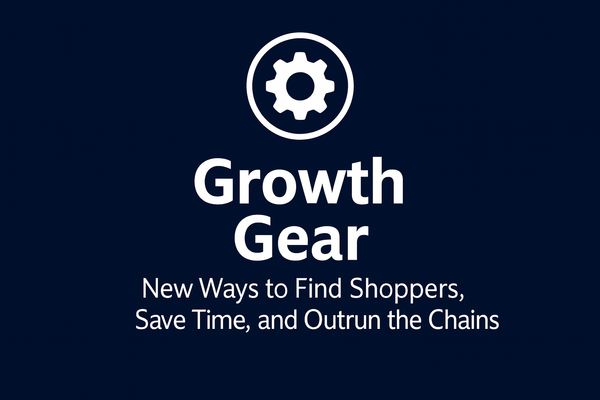From Data to Decisions: How Smart POS Analysis Transforms Category Management
Most operators collect data but miss insights. This guide shows how smart POS analysis transforms shelf layout, timing, and profit—turning daily transactions into strategic decisions that move your store forward.

Most convenience store owners collect mountains of POS data daily, yet stores using systematic POS data analysis achieve 15-25% better category performance than those relying on intuition alone, according to retail analytics research from Krunchbox. The tragedy? Most operators barely scratch the surface of their available data, treating their POS system as little more than a cash register when it could be their most powerful category management tool.
The difference between successful independents and struggling stores often comes down to one critical factor: the ability to transform daily transaction data into strategic category decisions. While competitors guess at what to stock, winning operators use systematic analysis to know exactly which products drive traffic, which categories generate the highest margins, and when to make strategic shelf changes that boost profitability.
Beyond Daily Sales Totals: What POS Data Analysis Really Means
POS data analysis for convenience stores extends far beyond reviewing daily sales summaries to examine the deeper patterns that drive customer behavior and store profitability. True POS analysis involves systematic examination of category velocity, customer purchase patterns, time-of-day trends, and seasonal fluctuations to make evidence-based merchandising decisions, according to convenience store analytics research from Electrum Loyalty.
The approach differs fundamentally from traditional "gut feeling" merchandising that relies on anecdotal observations or vendor recommendations. Instead of making category decisions based on what "seems" to be selling well, data-driven operators use quantified metrics to understand exactly how each category performs across different time periods, customer segments, and seasonal cycles.
Modern POS systems capture granular transaction details that reveal customer behavior patterns invisible to casual observation. When a customer purchases an energy drink at 2 PM on Tuesday, that transaction contains valuable intelligence about daypart performance, category preferences, and timing patterns that inform strategic decisions about placement, pricing, and promotion timing, notes retail analytics guidance from FTx POS.
The systematic approach requires shifting from reactive restocking to proactive category optimization. Rather than waiting for empty shelves to signal reorder needs, operators using POS analysis can predict demand patterns, identify underperforming categories before they become problems, and optimize shelf space allocation based on actual revenue per square foot rather than assumptions.
Key Data Points That Drive Category Decisions
Item Velocity and Turn Rates
Item velocity analysis reveals which products move fastest and which tie up valuable shelf space without generating proportional returns. By calculating units sold per week and inventory turn rates, operators can identify fast-moving items that deserve expanded shelf space and slow movers that should be reduced or eliminated, according to POS analytics guidance from Shopify.
The analysis becomes particularly powerful when segmented by daypart and season. A product showing strong overall velocity might actually perform poorly during specific time periods, suggesting opportunities for promotional timing adjustments or complementary product placement that could boost performance during weak periods.
Basket Attachment Patterns and Cross-Selling Opportunities
Market basket analysis identifies which products customers frequently purchase together, revealing cross-selling opportunities and optimal product placement strategies. Industry research shows that convenience stores capturing basket attachment data can increase average transaction size by 15-20% through strategic product grouping and suggestion selling, according to retail analytics research.
The insights extend beyond obvious pairings like chips and soda to reveal unexpected connections. When POS data shows that customers buying coffee frequently also purchase specific snack items, operators can create targeted displays or train staff to suggest complementary purchases that feel natural rather than forced.
Daypart Performance by Category
Understanding how different categories perform throughout the day enables strategic staffing, promotional timing, and shelf optimization decisions. Morning coffee sales might represent 40% of beverage revenue between 6-10 AM but only 8% during evening hours, while energy drinks show the opposite pattern, according to convenience store analytics research from Success Systems.
This temporal analysis transforms everything from labor scheduling to promotional planning. Operators can time coffee promotions during natural peak periods while focusing evening promotional efforts on categories that customers actually purchase during those hours, maximizing promotional ROI through strategic timing alignment.
Seasonal Trend Analysis and Inventory Planning
Systematic seasonal analysis reveals predictable demand cycles that enable proactive inventory management and promotional planning. Rather than reacting to seasonal changes after they occur, operators can anticipate demand shifts weeks in advance and adjust ordering, pricing, and shelf space allocation accordingly.
Margin Per Square Foot Calculations
The ultimate category performance metric combines sales velocity with profitability to reveal which categories generate the highest return on valuable shelf space. This analysis often reveals surprising insights—high-volume categories with low margins might generate less total profit than smaller categories with superior margins, suggesting opportunities for space reallocation that boost overall store profitability.
Operational Advantages Through Data-Driven Decisions
Smart POS analysis eliminates the guesswork that leads to overstocking slow movers, understocking winners, and missing promotional opportunities. The systematic approach reduces inventory carrying costs while improving in-stock performance on items that actually drive customer satisfaction and repeat visits.
Shelf space optimization becomes scientific rather than intuitive. When operators know exactly which categories generate the highest margin per square foot, they can make strategic space allocation decisions that maximize store profitability rather than simply filling shelves with whatever vendors recommend.
As The Office Prodigy learned when they systematized their data analysis processes, "Motion is running daily sales reports and filing them away. Movement is analyzing that data to make three specific category changes each month that drive measurable results." The same principle applies to convenience store category management—collecting data without acting on insights represents motion, while using analysis to drive strategic category decisions creates movement toward improved profitability.
Promotional timing becomes strategic rather than calendar-driven. Instead of running generic promotions during traditional sale periods, operators can time category-specific promotions during peak demand windows when customers are most likely to respond, maximizing promotional lift while minimizing margin erosion.
Practical Applications for Implementation
Setting Up Simple Data Review Routines
Effective POS analysis doesn't require sophisticated software or extensive training—it requires systematic habits that transform routine data into actionable insights. Operators can establish weekly 30-minute review sessions that examine key metrics: top-performing categories, items with declining velocity, and seasonal pattern changes that suggest upcoming opportunities or challenges.
The routine should focus on actionable metrics rather than comprehensive reporting. Similar to how The Office Prodigy streamlined their data processing by focusing on decision-relevant insights, convenience store operators should concentrate on data points that directly inform category decisions rather than getting lost in comprehensive but overwhelming reports.
Identifying Quick Wins Through POS Analysis
The fastest return on POS analysis investment comes from identifying obvious optimization opportunities that require minimal risk or investment. These might include expanding shelf space for consistently high-performing items, reducing facings for slow movers, or adjusting promotional timing based on observed demand patterns.
Category Performance Scorecards and Decision Frameworks
Creating systematic category performance measurement enables consistent decision-making and continuous improvement tracking. Simple scorecards that track velocity, margin, and turn rates by category provide objective foundations for space allocation, promotional planning, and vendor negotiation decisions.
Systematic Decision-Making Processes
The most successful operators develop repeatable processes that turn POS insights into consistent category improvements. Rather than making ad hoc changes based on individual observations, systematic approaches ensure that category decisions support overall store strategy while maintaining operational consistency.
Store owners who master POS data analysis gain sustainable competitive advantages through evidence-based category management that optimizes shelf performance, improves inventory efficiency, and builds customer satisfaction through better product availability and strategic pricing. The difference between successful independents and struggling competitors often comes down to this fundamental capability: transforming transaction data into strategic insights that drive consistent performance improvement.
As convenience store competition intensifies and customer expectations continue evolving, the ability to make data-driven category decisions becomes increasingly valuable for operators committed to building sustainable, profitable businesses that serve their communities effectively while generating strong returns for their investment.
This article is part of the weekly "Shelf Sense" series from C-Store Thrive.
Found this analysis helpful? Share C-Store Thrive with fellow convenience store owners who want to turn their POS data into profit-driving decisions!





